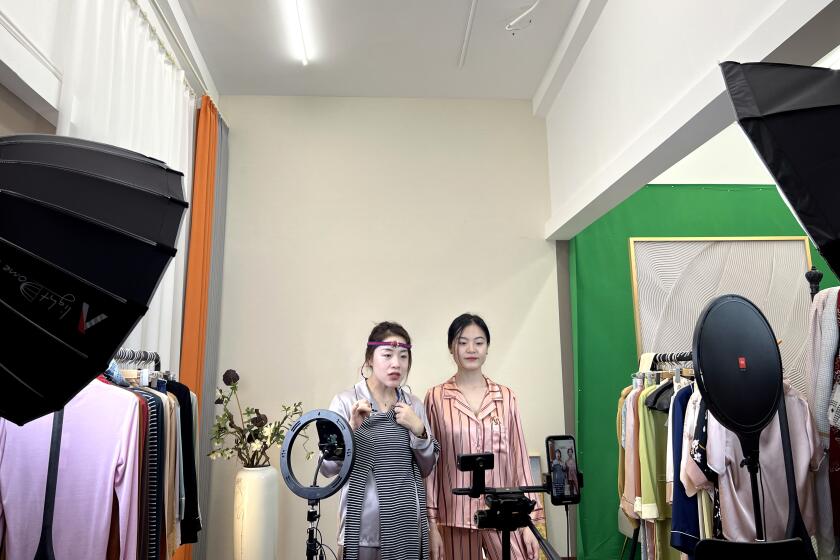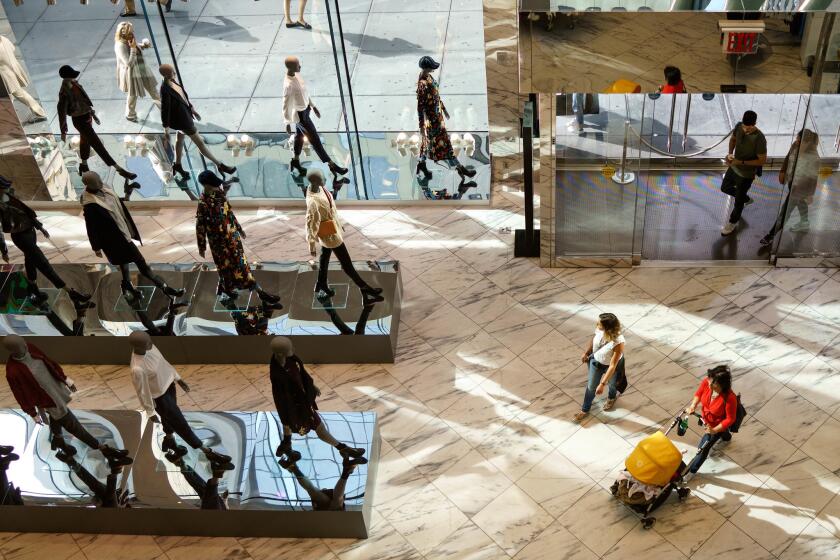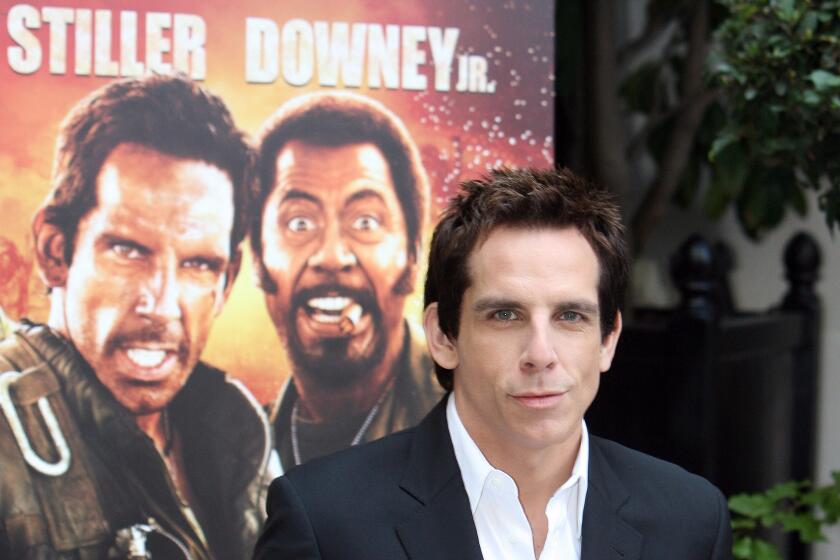Do what’s right for the planet or for your pocketbook? A fast-fashion dilemma

- Share via
I realized I had a problem with internet shopping the day my 13-year-old niece looked at the packing slip in a box that had just arrived and yelled, “What — $200 for a pair of jeans?!”
I can explain.
I have never spent $200 on a pair of jeans in my life. Kirkland, after all, is my couturier.
But an ad for “Jetset Flare” jeans kept popping up on my Instagram feed. And my Facebook feed. I knew nothing about the brand, Frame. But I loved the way the jeans looked on the incredibly tall, slender model whose gray sweater was partially and effortlessly tucked into the waistband. And after the 50th time I saw the ad, my brain was primed for purchase.
Conveniently ignoring the balance on my credit card, I decided I had to have a pair of Jetset Flare jeans, which, if I am being totally honest, were basically pull-on leggings. But they were on sale. A couple of glasses of Chardonnay may have been involved. I clicked a few times and promptly forgot about my purchase.
When they arrived, I tried them on and loved them. They were made in Los Angeles, of a handsome, curve-hugging mostly cotton denim with a little stretch.
I carelessly left the receipt where my niece could find it. Her sticker shock was the result of her own online shopping habits, which consist almost exclusively of ordering fast-fashion from the Chinese mega-manufacturer Shein.
Manufacturing is leaving China for cheaper countries. To survive, Chinese factories are trying to create their own global brands to sell their goods.
It’s staggering how inexpensive Shein goods are, and astounding how well-made and detailed they are for the price, though the materials are generally eco-unfriendly synthetics.
Shein (pronounced SHE-in) spits out more than a million styles a year, dwarfing the output of its popular fast-fashion competitors H&M (25,000 styles a year) and Zara (35,000). Last year, Shein generated an estimated $8 billion in U.S. sales, and has, inevitably, become a social media phenomenon. It is the most downloaded shopping app in the world.
Young women (mostly) post TikTok videos of their #SheinHauls. Forget a single pair of Frame jeans for $200. Two hundred bucks at Shein buys a whole new wardrobe: Fashionable pants for $9.99. A knit outfit, top and bottom, for $12.08. Strappy, red faux-suede heels for $21.
I never thought I’d have an epiphany in my closet.
There’s been no shortage of controversy around Shein, whose plans for a U.S. initial public offering have alarmed public officials. In May, Reuters reported that a bipartisan House group asked the Securities and Exchange Commission to stop the IPO until Shein proves that it does not use Uyghur forced labor. Last year, Bloomberg News sent off some Shein garments to a lab that reported that the cotton came from the region in China where Uyghurs have been subject to repression, forced labor and imprisonment. Shein denies the forced labor claims.
Still, in a report released in June, the House Select Committee on the Chinese Communist Party implicated both Shein and its fast-growing competitor, Temu, in shipping products most probably made with forced labor. Shein, in particular, has benefited from a loophole in trade law that allows foreign goods into the country duty-free and with almost no customs scrutiny as long as packages are valued at less than $800 and go directly to consumers. (It would be hard to spend that much on a Shein order.)
Another unsavory aspect of Shein: It steals from small-time brands by knocking off their work at lightning speed to sell at a fraction of the original’s price. The internet is awash with devastated independent designers showing comparisons of their handmade originals with Shein machine-made rip-offs.
The clothing industry is responsible for about 10% of global greenhouse gas emissions and consumes more energy than aviation and shipping combined, the U.N. says.
There have also been reports of unacceptably high levels of lead in some of the company’s products.
This summer, Shein launched a charm offensive. It invited a group of American social media influencers on an all-expenses-paid boondoggle to China. “The plan worked,” NPR reported. “The influencers gushed about clean factories and smiling, happy workers who don’t break a sweat.” The backlash was swift. The influencers were accused of participating in a propaganda stunt.
In May, students revolted at the Fashion Institute of Design and Merchandising in Los Angeles when the school announced that Shein would fund 12 scholarships in the amount of $40,000 per student. When you think about it, it’s actually stunning that a school devoted to teaching students how to operate in the fashion world with originality and sustainability would accept support from a company that undermines those very values.
So, about my Frame jeans.
Why choose a vague word as the smug shorthand for something morally objectionable? A backlash against ‘problematic’ seems to be brewing.
This company is the polar opposite of Shein.
Frame was launched in 2012 by Jens Grede and Erik Torstensson, two Swedes with reams of marketing experience. That expertise is apparent in most of the coverage of the brand I’ve read: Gushing interviews with the founders, who hang out with A-listers, live in architecturally important homes and host exclusive dinner parties for influential members of the fashion press while proclaiming that they are down-to-earth guys searching for the perfect pair of skinny jeans.
Fashion hype aside, Frame’s well-curated collections are made in L.A. of high-quality fabrics, with price tags that reflect it.
But about the price tag: I ended up returning my Frames. I just could not justify the expense.
Don’t worry, though. I won’t be shopping at Shein any time soon.
It’s back to Costco for me.
More to Read
A cure for the common opinion
Get thought-provoking perspectives with our weekly newsletter.
You may occasionally receive promotional content from the Los Angeles Times.














